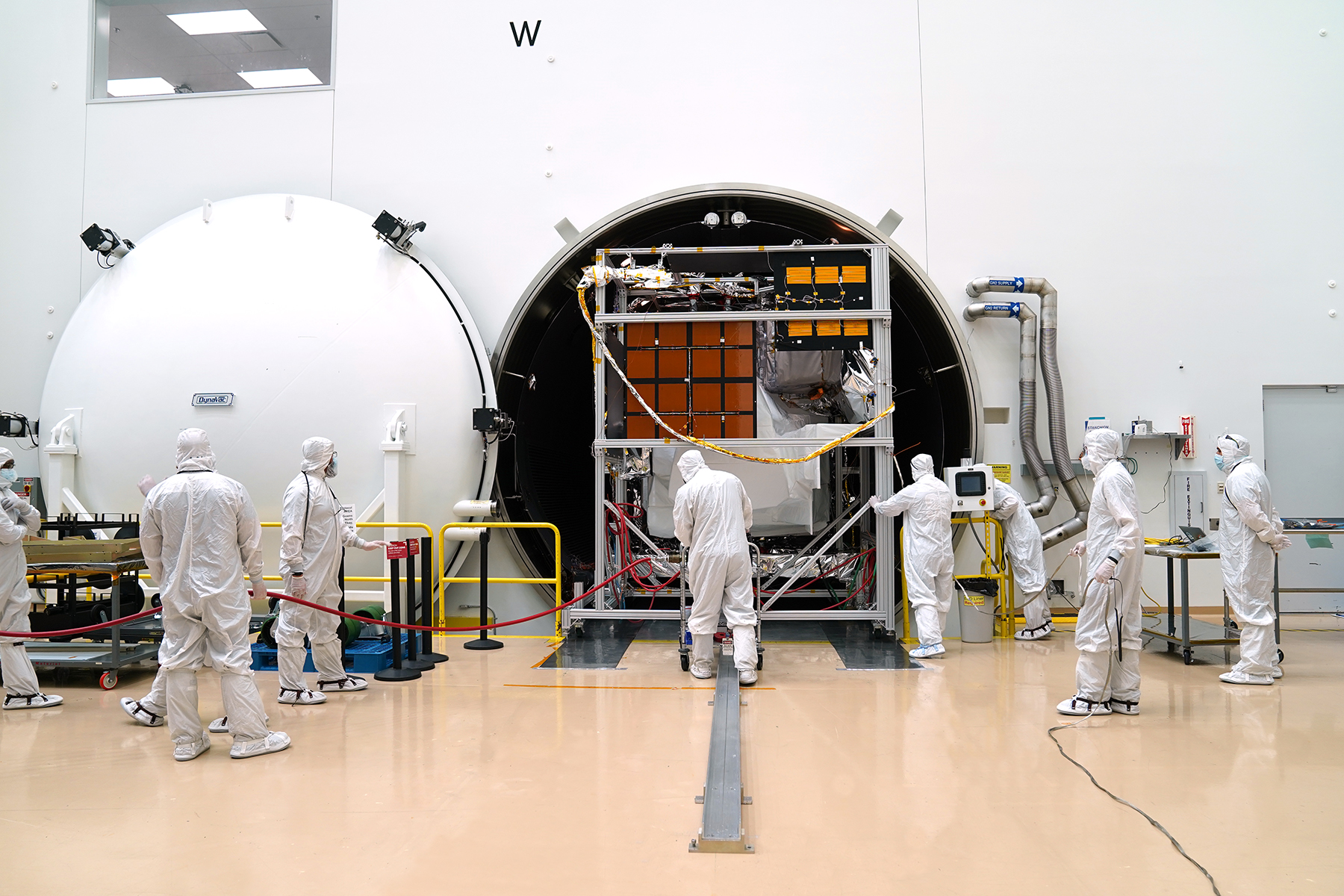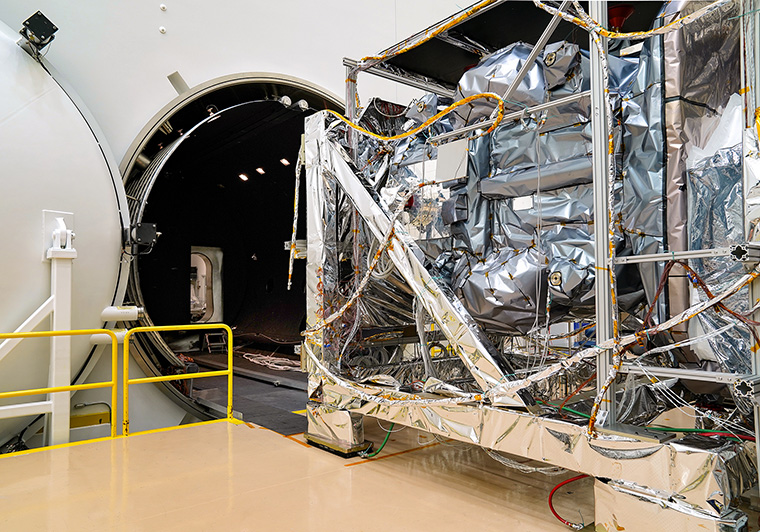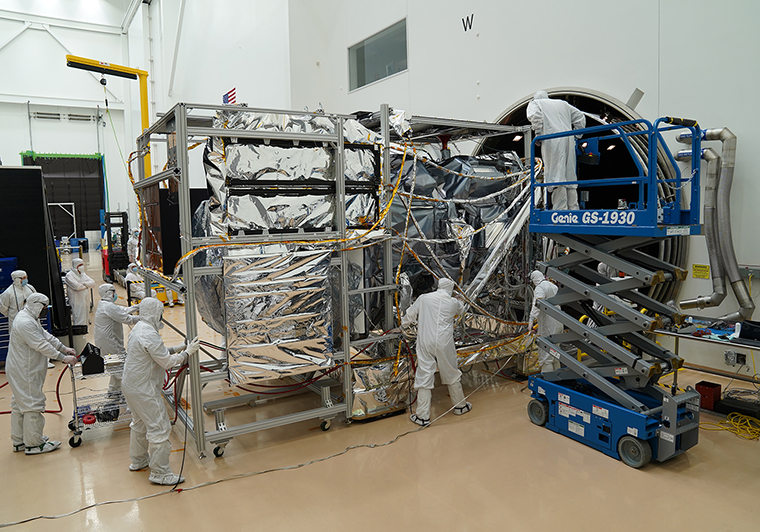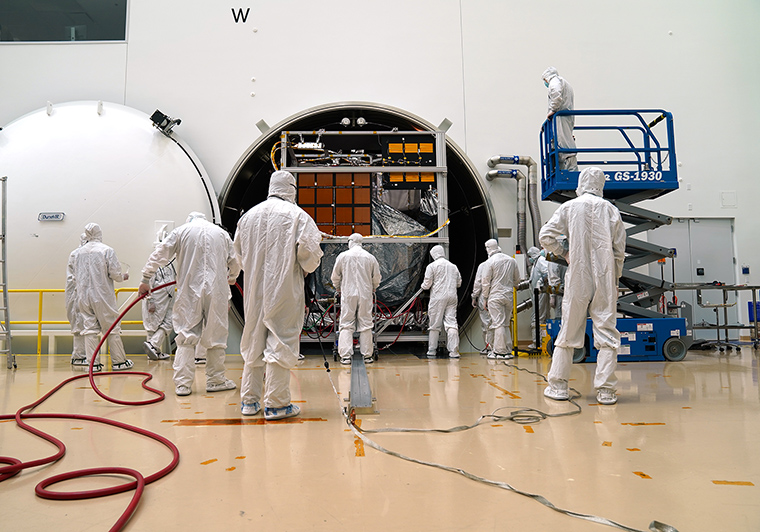by Kate Ramsayer, NASA Goddard Space Flight Center

The Landsat 9 satellite has successfully completed its most strenuous environmental test leading up to launch. In a 42-day trial at Northrop Grumman’s facility in Gilbert, Arizona, the satellite was sealed in a thermal vacuum chamber designed to simulate the harsh environment of space, allowing engineers to assess how the spacecraft and instruments will function at the hot and cold temperature extremes of the sunlit and shadowed portions of its orbit.
“The thermal vacuum test went extremely well, and what was really impressive was the performance of the two instruments,” said Charles Baker, Landsat 9 mission systems engineer with NASA’s Goddard Space Flight Center in Greenbelt, Maryland. “It’s an extremely sound observatory.”
Landsat 9, jointly managed by NASA and the U.S. Geological Survey, is scheduled to launch in September 2021. Landsat satellites have been continuously gathering data about Earth’s land surfaces since 1972, and this latest satellite will continue the Landsat program’s critical role in monitoring, understanding and managing land resources such as food, water, and forests.
First, however, engineers have to put Landsat 9 to the test.
The components, including the spacecraft bus and the two science instruments – the Operational Land Imager 2, or OLI-2, and the Thermal Infrared Sensor 2, or TIRS-2 – had all been tested individually before being integrated in Arizona. With everything in place and connected, the observatory as a whole had to be put through a series of tests.
“The whole flight observatory is ready to go – and we just need to make sure it will work in the extremes of space,” said Jeff Pedelty, instrument engineer with Landsat 9. “Among my non-NASA friends, I’ve explained it as: We try to break it, but we hope it doesn’t.”




In Fall 2020, engineers ran tests to ensure that electromagnetic energy fields and radiation wouldn’t cause any problems, said Roberto Alemán, Landsat 9 observatory manager at NASA Goddard. Then, the satellite was put through vibration and shock testing, to make sure it can withstand the jostling of launch and on-orbit events like the deployment of solar panels.
For thermal vacuum testing, which ended April 2, engineers cycled the spacecraft through cold temperatures (-4 Fahrenheit, or -20 Celsius) and hot temperatures (149 F, or 65 C), with the added hardship of a space-like vacuum.
“We know the components work in ambient [pressure], but there are definitely parts and systems that get stressed if they’re too hot and too cold,” Alemán said. “And there’s a big difference between cold and hot at ambient, and cold and hot in a vacuum.”
With the thermal vacuum test completed, the Landsat 9 team will now make some minor adjustments, conduct another test at room temperature, and then get ready to transport Landsat 9 to the launch site at Vandenberg Air Force Base in California this summer.





